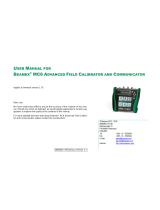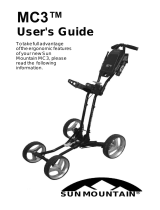
Data Sheet
All contents are Copyright © 1992–2007 Cisco Systems, Inc. All rights reserved. This document is Cisco Public Information. Page 4 of 13
Table 1. Features and Benefits of Cisco Aironet 1250 Series Access Points
Feature Benefit
Data Rates of up to 300
Mbps per Radio, 600 Mbps
per Access Point
The 802.11n draft 2.0 standard provides capabilities such as 40-MHz channels, packet
aggregation, and block acknowledgement which significantly increase the amount of
bandwidth available for user applications. With support for physical layer (PHY) data
rates up to 300 Mbps per radio, this represents a greater than five-fold increase over
the performance of 802.11a/g networks.
Enhanced Reliability and
Predictability
MIMO technology, with its multiple antennas and advanced signal processing,
improves coverage, reduces dead spots, and augments overall client throughput.
MIMO also enables higher data rates by transmitting multiple spatial streams across
the unique paths formed between devices. Enhanced reliability and throughput
provides a better overall end-user experience for users relying on the wireless network
for business functions.
Powerful Platform Engineered to support the power, thermal dissipation, memory, CPU, and Gigabit
Ethernet transmission requirements of 802.11n and future wireless technologies.
Modular Field-Upgradeable
Design with Easy-to-Install
Modules
Investment protection through field-upgradeable radios. As technology evolves, radio
modules can be replaced in the field with new radio modules, preserving the
investment in the access point chassis and avoiding the expense of installing a new
access point.
2.4-GHz and 5-GHz Radio
Modules
Dual radios allow simultaneous operation of 2.4-GHz and 5-GHz wireless networks,
offering the greatest number of available channels and therefore the greatest system
capacity and scalability.
Both Inline and Local
Powering Options
To realize optimal performance, the access point supports both inline power delivered
over a single Ethernet cable and local power options.
Extensive Interoperability The Aironet 1250 Series Access Point has undergone extensive interoperability testing
to ensure simple, secure interoperability with other 802.11 devices. It is the first Wi-Fi
CERTIFIED 802.11n draft 2.0 access point, has earned the Intel Connect with Centrino
certification, and has undergone extensive testing in 802.11n plug fests.
Backward Compatibility with
Existing 802.11a/b/g Clients
Protects existing 802.11a/b/g investments and provides an easy migration to 802.11n.
Integrated RF Management
Capabilities
Integrated RF management capabilities address the operational challenges of
deploying business wireless networks. These capabilities include Radio Resource
Management, MIMO, superior DFS support, SDR certification, and spectrum
intelligence integration into WCS. Integrated RF management capabilities increase
system capacity, improve system performance, perform automated self-healing to
compensate for RF dead zones and access point failures, and provide a
comprehensive way to manage one of your most precious assets, your corporate
spectrum.
Supports up to 24 non-
Overlapping Channels
1
Provides lower potential interference with neighboring access points, which simplifies
deployment and reduces co-channel interference for fewer transmission errors and
greater throughput. More channels also means that more of the high- throughput, 40-
MHz channels introduced in the 802.11n draft 2.0 standard are supported.
External RP-TNC Antenna
Connectors for Both 2.4-GHz
and 5-GHz Radios
Antenna connectors support a variety of Cisco 2.4-GHz and 5-GHz antennas, providing
range and coverage versatility.
Cisco Unified IDS/IPS An integral part of the Cisco Secure Wireless Solution, the industry’s first integrated
wired and wireless security solution, the access point can monitor the RF environment
to detect and locate unauthorized wireless activity, including rogue access points and
RF denial of service attacks.
Management Frame
Protection
Management frame protection encrypts the management header of the 802.11 packet
and enables the access point to detect spoofed frames from malicious users
impersonating infrastructure access points. If an access point detects a malicious
attack, an alert will be generated and reported back to the network administrator.
Rugged Metal Housing The access point is built with a metal case and sturdy features for deployment in
rugged environments such as factories, warehouses, and other industrial
environments.
UL 2043 Plenum Rating and
Extended Operating
Temperature
Supports installation in environmental air spaces, such as areas above suspended
ceilings.
Multipurpose and Lockable
Mounting Bracket
Provides flexibility during site survey and traditional installation as well as helping to
deter theft.
1
Supports 3 2.4-GHz and 21 5-GHz channels in the FCC regulatory domain; channel support varies by
country. See Table 2 for frequency band and operating channel support in your particular regulatory domain.















